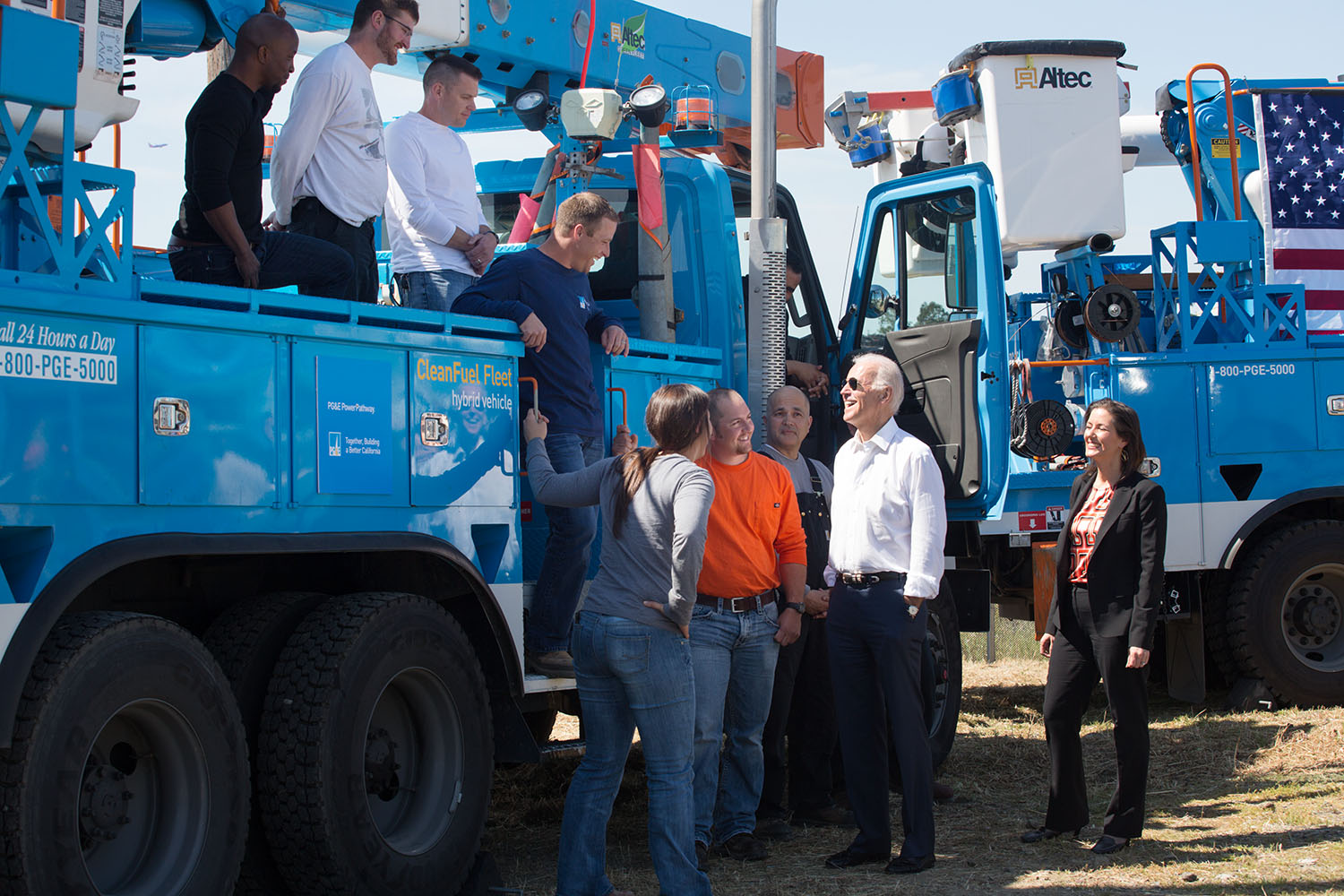
Last year, the President laid out a vision for our job training system that – as he explained – “trains our workers first based on what employers are telling us they’re hiring for and helps business design the training programs so that we’re creating a pipeline into jobs that are actually out there.” This month, the Administration is taking two key steps to realize that vision – both by partnering with industry and by reforming our own job training system.
Partnering with Industry:
White House Convening on Upskilling Low-Wage Workers to Better Paying Jobs
First, we are taking steps with industry by working with employers, labor leaders, foundations, educators, tech innovators, non-profits and others to double down on practices that enable more front-line workers to advance. For one example of these practices, consider the PowerPathways training class at PG&E in California. Like many other companies in the growing utility industry, PG&E has been faced with significant shortages in skilled workers. So the company has worked closely with labor partners, educators, and the local community to provide more workers with the skills the industry needs to hire and promote.
Last week, Vice President Biden visited PG&E, and as he explained in his remarks about the program:
That means one of the guys on this truck here may not just be coding, may end up being one of the managers in the corporate headquarters. For real. This is a real genuine opportunity.
There is no automatic limit set as to what can happen. It’s good for business, but it’s also good for employees….More and more companies around the country are recognizing the importance of helping their entry-level employees gain the skills to move to more senior jobs and management positions within those very companies.
PG&E is not alone. As the economy continues to improve, the unemployment rate is declining, job creation is growing, and as a result more and more companies need skilled workers. But still too many workers in low-wage jobs may feel stuck.
In January, the President called on employers, educators, labor unions, foundations, and tech innovators to equip more front-line workers with the skills they need to advance into better paying jobs without having to leave their current jobs to go back to school full time. And next week, on April 24, the White House will bring together 150 employers, labor leaders, foundations, educators, tech innovators, non-profits and others who are answering the President’s call to action by committing to implement practices that enable more front-line workers to advance. The Vice President will be there to highlight those who are leading the way, and Secretary Tom Perez, Secretary Arne Duncan, Secretary Penny Pritzker and I are looking forward to hosting this working session with so many leaders who have committed to take action.
Learn more about the President's call to action here.
Reforming our Federal Workforce System
Second, we are taking steps to reform the Federal job training system to better prepare workers for the jobs employers are hiring for. Last July, the President signed into law the Workforce Innovation and Opportunity Act (WIOA) – the most significant reform to our Federal workforce system in nearly 20 years. The same day, the Vice President released his Job-Driven Training report, recommending improvements to our Federal training programs, including stronger employer engagement, the use of work-based learning approaches like apprenticeship, accountability for employment outcomes, and regional partnerships.
This week, we are delivering on key elements of that vision – with proposed rules implementing WIOA that will move our entire system to be more job-driven. We know that some training programs still aren’t working well enough, and we are taking aggressive action to focus them on partnerships that train for in-demand skills and that match participants with in-demand jobs. The proposed rules published yesterday include reforms that will affect over $7 billion in annual training funding, and programs that serve approximately 20 million Americans each year, by:
- Ensuring Accountability for Employment Results. Programs that did not previously report employment and earnings outcomes will now be required to do so, and all core programs will report on standardized outcomes so that their results can more easily be compared.
- Improving Transparency for Job Seekers to Help Them Make Better Choices. The new law requires that all training providers publish a scorecard with information on employment and earnings outcomes so that any American worker looking to invest time and money in training can go online and see which programs have the best chance at giving them a leg up.
- Strengthening employer engagement and service to businesses. We are implementing a new accountability measure for whether businesses are served effectively by the workforce system. The law will also increase opportunities for work-based learning, including on-the-job training and Registered Apprenticeships.
- Enhancing Coordination and Collaboration across Programs. We are implementing provisions of the law that require unified State planning across programs and co-location of more programs in American Job Centers. These reforms will result in better strategic planning and improved communication across the workforce system.
Our aim is that these reforms will create more stories like Danielle King’s. After losing her job in the Great Recession and spending months homeless, Danielle was advised to attend a training program that gave her the skills to get an in-demand job as a machine operator making $20 an hour. Enrolling in that program – supported by the Federal workforce system – gave Danielle guidance about what jobs employers were hiring for and what training made the most sense for her.
In the coming months, we’ll continue to build upon the opportunities and recommendations identified in the Vice President’s report on Job-Driven Training by advancing federal reforms and public-private partnerships. Are you interested in providing feedback on the proposed rules? Click here.



